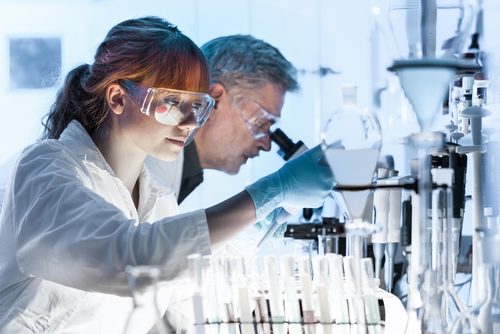Researchers Reveal Critical Role of KLF15 Protein in Pulmonary Hypertension

A protein called KLF15 has an important protective role in the lung, according to the findings of Johns Hopkins researchers.
KLF15 was found to be a critical regulator of genes that are necessary for the maintenance of proper lung blood vessels’ function. In addition, the protein was shown to protect cells of the lining of blood vessels (endothelial cells) from potentially harmful events, such as lack of oxygen.
These findings, reported recently in the journal Arteriosclerosis, Thrombosis, and Vascular Biology, suggest that KLF15 (Kruppel-like factor 15) and its triggered protective mechanism could represent new therapeutic targets for diseases such as pulmonary hypertension.
The study conducted by researchers at Johns Hopkins Medical Institutions is titled “Hypoxia Triggers SENP1 (Sentrin-Specific Protease 1) Modulation of KLF15 (Kruppel-Like Factor 15) and Transcriptional Regulation of Arg2 (Arginase 2) in Pulmonary Endothelium.”
The KLF protein family regulates the development and function of blood vessels, but until now there was no evidence that KLF15 could play a role in blood vessels’ stability in the lungs.
First, the researchers evaluated the levels of this protein and found it was present in pulmonary endothelial cells. However, when these cells were exposed to low levels of oxygen (hypoxia, a pulmonary hypertension-like state) KLF15’s levels decreased significantly. This KLF15 response to hypoxia was specific to the lungs, as other endothelial cells did not show a similar KLF15 reduction.
Reduction of the protein promoted several changes to the cells, as KLF15 mediated the repression or production of other proteins that contribute to blood vessels’ maintenance.
In particular, KLF15 was found to regulate the production of nitric oxide that can enhance blood vessels’ dilation, as well as prevent the production of reactive oxygen species (ROS) that can damage cells.
“When cells get exposed to low oxygen levels, they produce large amounts of ROS that are injurious, and also lower amounts of nitric oxide, which is protective,” Deepesh Pandey, PhD, said in a press release. Pandey is assistant professor at the Johns Hopkins University School of Medicine and lead author of the study. “When we increase the expression of KLF15 in these cells, the production of reactive oxygen species and nitric oxide is restored to normal.”
Further experiments revealed that in hypoxic conditions, KLF15 is targeted for degradation in pulmonary endothelial cells, which as a consequence triggers ROS production and nitric oxide reduction. However, when the team modified the cells to increase KLF15 levels, these potentially harmful effects were reversed and the cells regained their normal function.
These findings demonstrate that KLF15 is not only critical for pulmonary blood vessels function and maintenance, but it also could be a potential therapeutic target.
“Our experiments advance our understanding of the way low oxygen levels make blood vessels sick,” said Lewis Romer, MD, senior co-author of the study and professor at the Johns Hopkins University School of Medicine. “The findings also potentially advance the search for drugs that not only control pulmonary hypertension but also may reverse the disease or cure it.”
The team is planning to further evaluate strategies to increase KLF15 levels as a treatment option for pulmonary hypertension in animal models.







